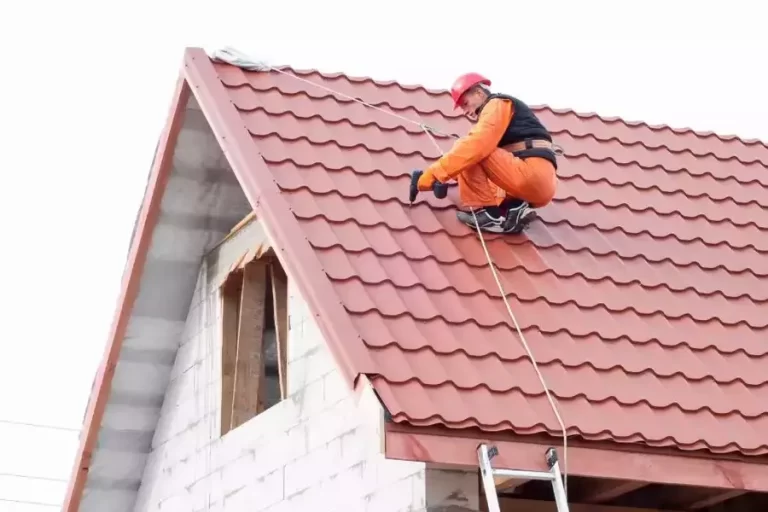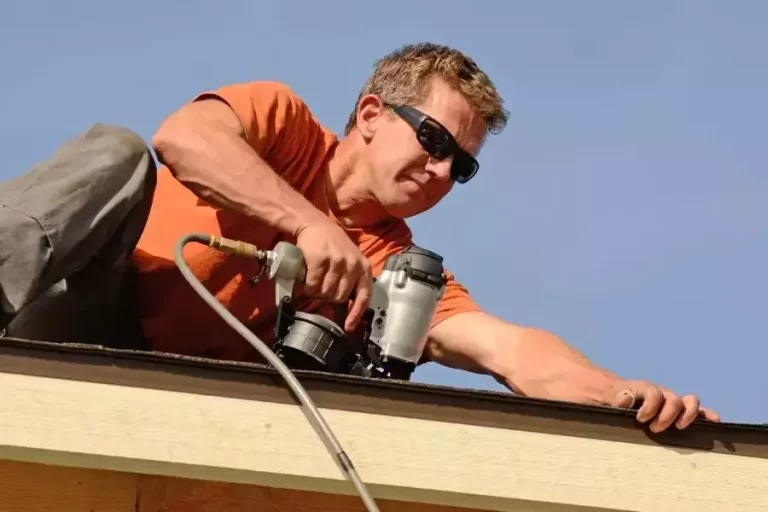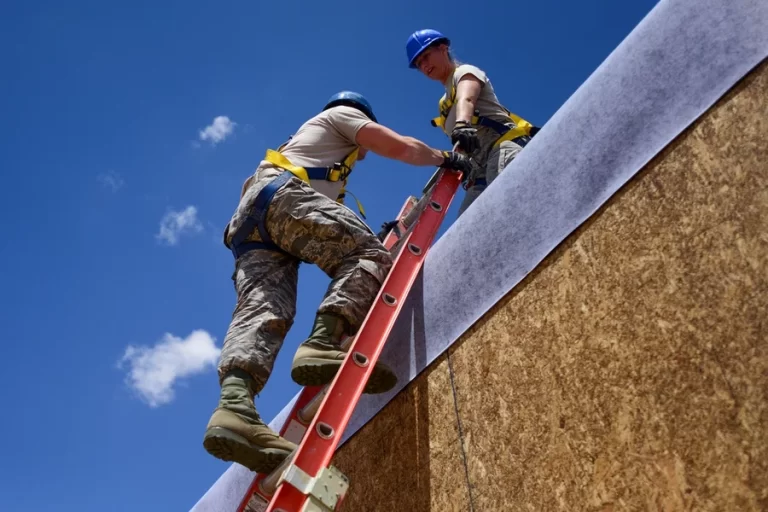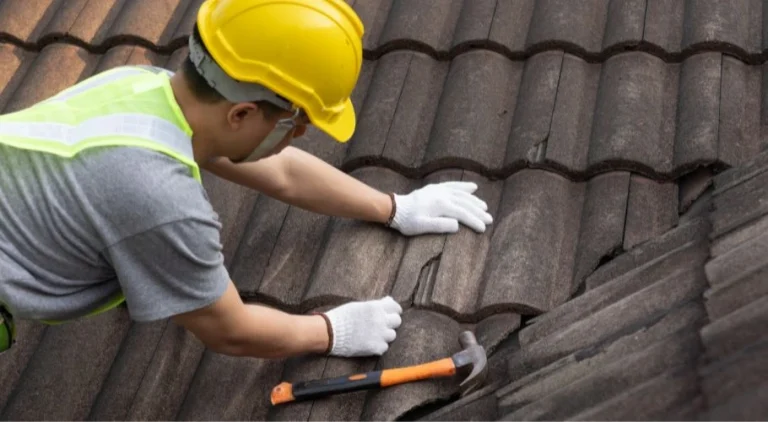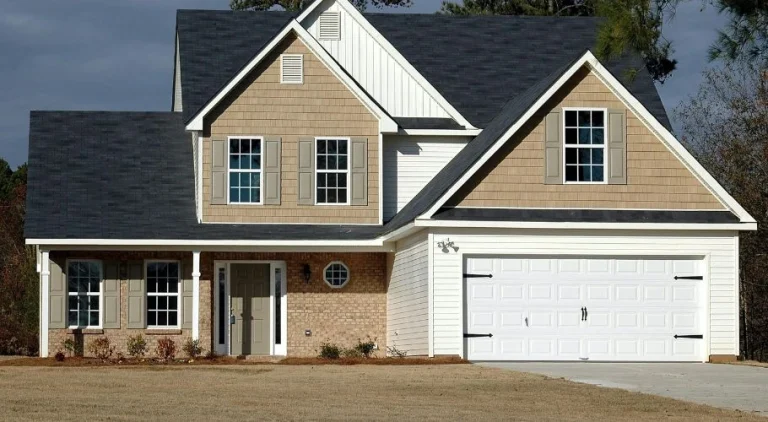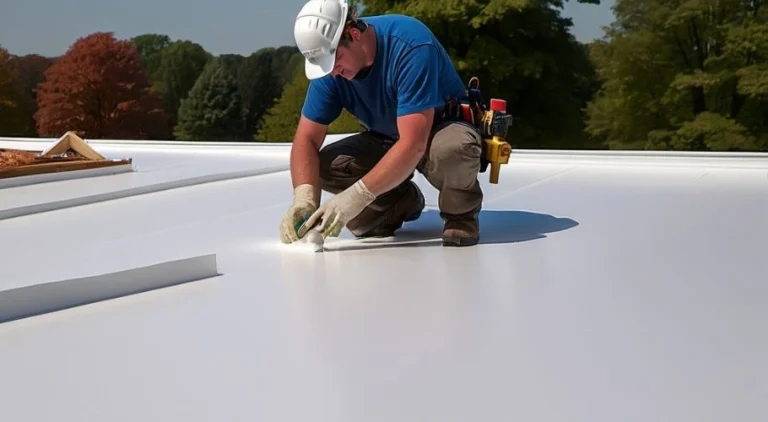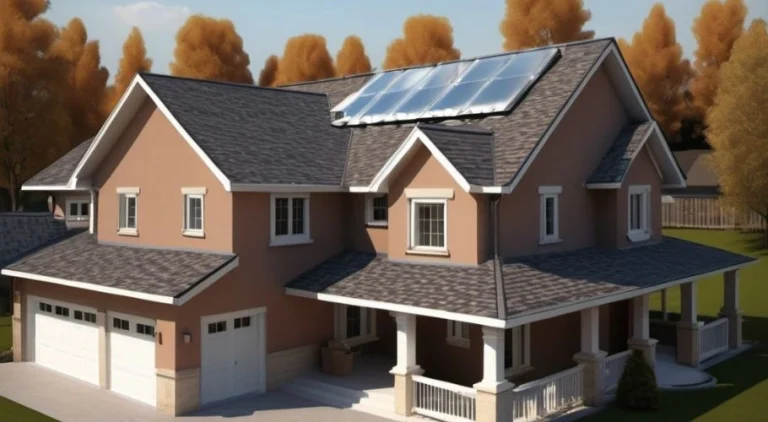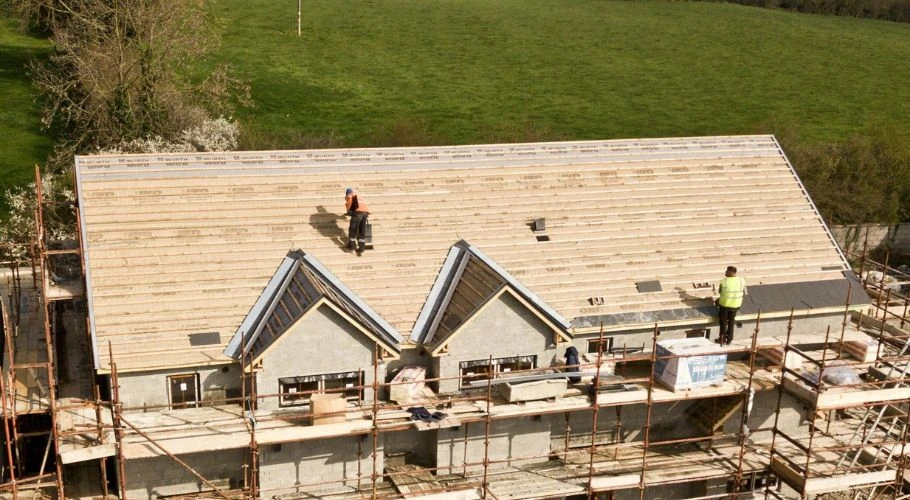Everything You Need to Know About Commercial Roofing
Commercial Roofing Information Hub
At Robbins Roofing, we understand that a reliable roof is critical for your business. Our Commercial Roofing Information Hub is your go-to resource for understanding the essentials of installation, maintenance, and repair. Learn about materials, industry standards, and proactive care tips to protect your investment and ensure your building is safe and energy-efficient. Whether you’re managing a retail space, office complex, or industrial facility, our expertise covers it all.
- Professional.
- Reliable.
- Affordable!
GET A FREE QUOTE TODAY!
Your Trusted Source for Commercial Roofing Information
Types of Commercial Roofing
With so many options in the commercial roofing industry, it’s helpful to have the guidance of knowledgeable roofing professionals. Interested in finding out more about single ply roofing systems for your business? Click here to learn more about Robbins Roofing’s commercial roofing services and find the perfect roofing solution for your building!
Single Ply Roofing Systems
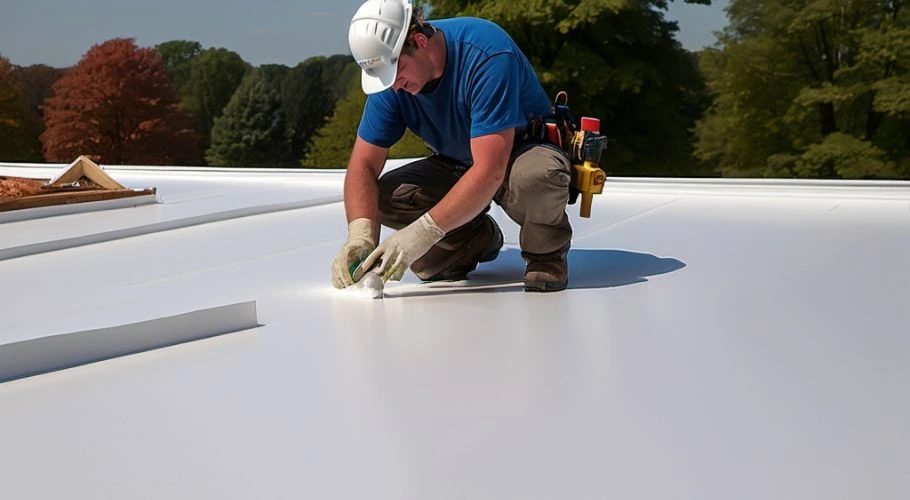
Understanding Single Ply Roofing Systems
Single ply roofing systems are composed of a single layer of membrane material, usually thermoplastic or synthetic rubber, applied over an insulation board on a roof deck. Known for their durability and flexibility, this membrane roofing system is suitable for low slope roofs in various climates, from hot asphalt environments to colder regions. The membranes are typically lightweight, reflective, and designed to resist UV radiation, making them energy-efficient choices.
Key Types of Single Ply Membranes
TPO (Thermoplastic Polyolefin)
TPO roofing systems are a popular choice in the commercial roofing market. TPO membranes are single ply, thermoplastic materials composed of a thermoplastic polymer that’s highly reflective and resistant to UV radiation. This quality makes TPO systems particularly useful for cool roofs, as they help regulate internal building temperatures and reduce energy costs. Known for their superior resistance to extreme heat and weather, TPO roofs often last for years with minimal maintenance.
 Key Benefits of TPO Roofing:
Key Benefits of TPO Roofing:
- Energy Efficiency: TPO roofing systems feature a highly reflective surface that reduces cooling costs.
- Durability: These membranes withstand high winds, UV radiation, and heavy foot traffic, making them ideal for busy commercial roofs.
- Cost-Effective: TPO roofing is generally less costly than other types of single ply membranes, providing good performance for the price.
PVC (Polyvinyl Chloride)
PVC roofing systems are another common single ply option. These roofs are known for their chemical resistance and durability. PVC membranes contain plasticizers and a reinforcing scrim, which improves flexibility and strength. This type of roofing system is highly resistant to chemicals, so it’s often installed in commercial buildings with high exposure to chemicals or oily substances.
Key Benefits of PVC Roofing:
- Chemical Resistance: PVC roofing material resists damage from chemicals, making it suitable for industrial or chemical-heavy environments.
- Long Service Life: These membranes are built to last, even under tough conditions, and provide watertight seams through heat welding.
- Fire Resistance: PVC roofing materials are fire-resistant, providing an additional layer of safety for commercial buildings.
EPDM (Ethylene Propylene Diene Monomer)
EPDM is a synthetic rubber roofing material that is flexible, UV-resistant, and capable of withstanding extreme temperatures. Known for its versatility and long-lasting nature, EPDM roofs are particularly useful for areas exposed to severe weather. This material can be installed using a variety of methods, including mechanical fastening and ballast, providing options to suit different buildings and budgets.
Key Benefits of EPDM Roofing:
- UV and Heat Resistance: EPDM resists UV rays and high temperatures, helping it to maintain its integrity in extreme weather.
- Ease of Installation: EPDM can be installed using adhesives, mechanical attachment, or ballast, making it versatile and easy to install.
- Affordability: As one of the more affordable single ply roofing materials, EPDM is popular among building owners looking for a budget-friendly option with solid performance.
Installation and Attachment Methods
Single ply roof systems offer flexibility in installation methods, which can be adapted to different building requirements and climates. These roofing solutions include various types such as PVC and TPO, known for their durability, ease of installation, and minimal seams compared to traditional methods.
Common methods include:
- Mechanical Attachment: Mechanically attached roofs are secured with fasteners that go through the membrane into the roof deck. This method is effective for wind resistance, providing superior stability.
- Heat Welding: For thermoplastic membranes like TPO and PVC, heat welding creates watertight seams by melting the edges together, forming a strong bond that protects against leaks.
- Ballast: This technique involves placing heavy materials like gravel or pavers over the membrane to hold it in place. It’s most often used with EPDM roofing systems and can provide added protection for the membrane.
Each attachment method serves specific purposes, depending on the building’s needs and climate. For example, heat welding is popular in hot climates, as it creates seamless, watertight barriers that resist UV radiation and radiation penetration. Mechanical attachment, on the other hand, works well in areas with strong winds, ensuring the roof remains firmly attached.
Single Ply Roofing in the Commercial Roofing Industry
In recent years, single ply roofing systems have gained traction within the commercial roofing industry due to their energy efficiency and durability. As businesses strive to reduce their carbon footprints, cool roofs and highly reflective surfaces have become crucial. Single ply roofs like TPO and PVC play a key role in this movement by lowering costs and reflecting sunlight away from the building, which also reduces the need for artificial cooling.
These roof systems also appeal to building owners who want to minimize maintenance needs. With fewer seams than other types of roofing, single ply systems are easier to maintain and have a lower risk of water penetration.
Advantages of Single Ply Roofing Systems
- Energy Efficiency: Reflective surfaces on single ply membranes help reduce indoor temperatures, contributing to lower energy costs.
- Cost-Effective Maintenance: With fewer seams and easy-to-apply repairs, single ply roofing systems require less upkeep over their lifespan.
- Long-Lasting Durability: These roofs are designed to last in both hot and cold climates, withstanding extreme weather conditions and maintaining their integrity.
- Environmental Friendliness: TPO and PVC membranes in particular help minimize a building’s environmental impact due to their energy-saving properties and synthetic materials.
- Adaptable to Various Building Types: Single ply roofing systems work well for commercial buildings, including warehouses, retail spaces, and offices. Whether it’s low slope roofs or roofs with traffic, these systems offer solutions tailored to the commercial roofing market’s demands.
Performance and Maintenance
Single-ply roofing systems are known for their durability and long lifespan. However, they do require regular maintenance to ensure optimal performance. Some common maintenance tasks include:
- Inspecting the roof for damage or wear and tear.
- Cleaning the roof to remove debris and dirt.
- Repairing any damaged or compromised areas of the roof.
- Replacing the single ply roofing membranes as needed.
Built Up Roofing Systems
Built up roofing (BUR) systems have long been a staple in the commercial roofing industry. Known for their durability, waterproofing capabilities, and excellent fire resistance, BUR systems provide reliable protection, especially for low slope or flat roofs. Composed of alternating layers of bitumen and reinforcing fabrics, built up roofing creates a seamless, multi-layered roofing system that resists harsh weather, UV rays, and foot traffic, making it ideal for industrial buildings, commercial properties, and structures requiring robust, long-lasting roofs.
Key Components of a Built Up Roof System
A BUR roof system includes several key layers:
- Base Sheet: The base sheet is the first layer applied to the roof deck, providing a solid foundation for the roofing system.
- Layers of Bitumen: Hot asphalt or cold applied adhesives are used to bond each layer of bitumen to the roof deck, ensuring a watertight seal.
- Ply Sheets: Ply sheets, made of organic mats or fiberglass, are embedded in the bitumen layers. These sheets add strength and flexibility to the roofing system.
- Reinforcing Fabrics: Additional layers of reinforcing fabric, often referred to as roofing felts, are embedded between layers of bitumen to enhance the roof’s durability and resilience.
- Cap Sheet or Gravel Layer: The top layer can be a white-coated cap sheet, a gravel layer, or mineral granules, which protect the roof from UV radiation, weathering, and thermal expansion. The gravel layer also adds an extra layer of fire resistance.
Benefits of Built Up Roofing Systems
BUR systems have remained popular for flat roofs and low slope roofs in commercial properties due to their many advantages:
- Durability and Long Lifespan: Built up roofing systems are designed to withstand foot traffic, UV rays, and extreme weather conditions, often extending the roof’s lifespan by decades.
- Excellent Waterproofing: The multiple layers of bitumen provide waterproofing capabilities that prevent water infiltration, which is crucial for low slope roofs and flat roofs where water can easily pool.
- Fire Resistance: With a gravel or mineral-surfaced cap sheet, BUR systems offer excellent fire resistance, an important feature for buildings in hot, dry climates.
- Energy Efficiency: Built up roofs can contribute to a building’s energy efficiency, especially when topped with reflective surfaces like white-coated cap sheets, which reduce heat absorption and help regulate internal temperatures.
- Thermal Expansion and Weather Resistance: The multi-layered structure accommodates the natural expansion and contraction of materials, providing resistance against cracking and thermal expansion due to hot weather or cold temperatures.
Types of Built Up Roofing Systems
In the commercial roofing industry, there are several variations of BUR systems to accommodate specific needs and preferences:
Traditional Asphalt Built Up Roofing
Traditional BUR systems use hot asphalt to adhere the layers together, forming a strong, seamless bond. This method provides excellent waterproofing and is commonly used in regions with moderate to high temperatures. The hot asphalt acts as a binding agent for multiple plies and reinforcing fabrics, creating a stable and durable roof system.
Cold Applied BUR Systems
For buildings where the application of hot asphalt may not be ideal, cold-applied adhesives are used to bond the layers together. Cold applied adhesives create a watertight seal similar to traditional methods but without the fumes and additional safety measures required for hot asphalt. These systems are particularly suitable for industrial buildings or properties where hot asphalt would be challenging.
Modified Bitumen BUR Systems
Modified bitumen roof systems are an advanced form of BUR that incorporate synthetic materials into the bitumen layers. These materials improve elasticity and flexibility, allowing the roof to perform better in regions with wide temperature fluctuations. Modified bitumen BUR systems are ideal for low slope and flat roofs where the roof’s membrane needs to handle movement and stress due to thermal expansion.
Design and Installation Considerations
When it comes to designing and installing a built-up roofing system, there are several key factors to consider. Here are some best practices to keep in mind:
Key Factors and Best Practices
Designing and installing a built up roofing system requires careful planning and attention to detail. Here are some essential factors and best practices to ensure a successful installation:
- Roof Deck Preparation: The roof deck must be clean, dry, and structurally sound before installation begins. Any debris, moisture, or damage can compromise the integrity of the roofing system.
- Material Selection: Choose high-quality bitumen and reinforcing fabrics to ensure durability and performance. The type of bitumen (asphalt or coal tar) and the choice between organic mats or fiberglass ply sheets can impact the roof’s longevity and resistance to environmental factors.
- Layer Application: Proper application of each layer is crucial. Ensure that the bitumen is evenly applied and that each ply sheet is correctly embedded. This creates a continuous sealed surface that enhances waterproofing and durability.
- Weather Conditions: Install the roofing system in favorable weather conditions. Extreme temperatures or wet conditions can affect the adhesion and curing of the materials.
- Professional Installation: Hiring a professional roofing contractor with experience in built up roofing systems is essential. They have the expertise to handle the complexities of the installation process and ensure that the roofing system is installed correctly.
How BUR Systems Compare to Other Roofing Options
While single ply roofing systems are a popular choice for some commercial roofs, BUR systems offer unique advantages for certain applications. BUR roof systems are known for their durability and require regular maintenance to prevent extensive damage:
- Multi-Layered Protection: Unlike single ply roofs, which rely on a single layer of material, BUR roofs offer multiple plies, providing added strength and waterproofing.
- Fewer Seams: The continuous sealed surface of a BUR roof minimizes seams, reducing the risk of leaks.
- Greater Resilience: BUR systems are particularly effective for commercial properties that experience heavy foot traffic, extreme weather, or challenging environmental conditions.
Installation and Maintenance
BUR installation involves laying multiple layers of bitumen and reinforcing fabrics over a roof deck, forming a robust membrane that protects the roof from water infiltration, UV rays, and physical damage. Due to the intricate installation process, a professional roofing contractor experienced with BUR systems is recommended to ensure proper installation and to maximize the system’s durability.
Regular maintenance is essential for extending the lifespan of a built up roof. Maintenance includes inspecting for wear and tear, addressing minor issues like cracks or punctures, and cleaning the roof surface to prevent debris buildup. Proper maintenance can help BUR systems last 20-30 years or more, depending on the quality of materials used and the building’s environmental conditions.
Maintenance and Repair Strategies
Built-up roofing systems require regular maintenance and repairs to ensure they continue to perform optimally. Here are some strategies to keep in mind:
- Regular Inspections: Early detection of issues can prevent more significant problems down the line.
- Cleaning: Keep the roof surface clean and free of debris. Accumulated debris can trap moisture and cause damage to the roofing system.
- Addressing Minor Issues: Promptly address minor issues like small cracks or punctures. Use appropriate repair materials to seal any breaches in the roofing system.
- Re-coating: Periodically re-coat the roof with a reflective coating or gravel layer to maintain UV protection and weather resistance. This can extend the lifespan of the built up roof.
- Professional Maintenance: Engage a professional roofing contractor for regular maintenance and repairs. Their expertise ensures that the roofing system remains in optimal condition and can help extend its lifespan.
By following these design, installation, and maintenance best practices, you can ensure that your built up roofing system provides reliable protection and longevity for your commercial property.
Ideal Applications for Built Up Roofing Systems
Built up roofing is well-suited for commercial properties, industrial buildings, and other structures with low slope or flat roofs. Its durability, waterproofing, and energy-efficient properties make it a wise choice for:
- Commercial Buildings: Offices, retail stores, and multi-purpose commercial properties benefit from BUR’s longevity and fire resistance.
- Industrial Facilities: Factories, warehouses, and other industrial sites appreciate BUR’s resistance to chemical exposure, foot traffic, and heavy loads.
- Buildings in Hot Climates: The gravel top layer or white-coated cap sheet provides UV protection and keeps interiors cooler, making BUR ideal for regions with high temperatures.
Discover the Benefits of Built Up Roofing for Your Property
Built up roofing systems offer unmatched protection, durability, and energy efficiency for commercial buildings. Whether you’re seeking a reliable solution for a flat roof or low slope roof, a built up roof system might be the perfect choice for your property.
EPDM Roofing Systems
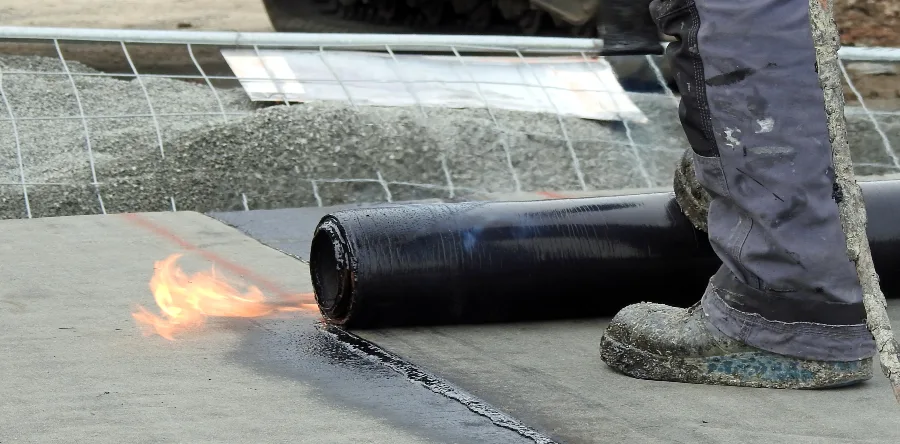
What is EPDM Roofing?
Available in large sheets, EPDM can cover an entire roof with minimal seams, which reduces potential points of leakage and creates a more watertight barrier. Due to its rubber-based nature, EPDM is commonly referred to as “rubber roofing” and is known for its resilience to weathering, UV rays, and temperature fluctuations.
Key Characteristics of EPDM Roofing
EPDM roofing systems are popular due to their unique set of characteristics, which provide multiple benefits for commercial roofing applications. Here are some of the primary features that make EPDM a valuable choice:
- UV Resistance: EPDM membranes have superior UV resistance, which prevents premature aging and deterioration, making EPDM an ideal choice for locations with high sun exposure.
- Flexibility and Puncture Resistance: The material’s flexibility allows it to adapt to building movements and resist punctures, making it especially suitable for buildings in extreme climates or with heavy foot traffic.
- Energy Efficiency: EPDM roofing provides excellent energy efficiency, particularly in moderate to cooler climates. The material can be produced in black, which absorbs heat and can lower energy costs during colder months, or in white, which reflects heat and helps keep buildings cool in warmer climates.
- Durability: EPDM membranes can last up to 30 years or more with proper installation and maintenance, offering building owners a long-lasting solution that provides protection and value.
Types of EPDM Roofing Systems
EPDM roofing systems can be installed in several ways to suit different building needs and budgetary constraints. Each installation method provides its own set of advantages, allowing building owners to choose the option that best fits their roof’s requirements.
- Fully Adhered: In a fully adhered EPDM system, the membrane is bonded directly to the insulation or roof deck using adhesives. This method ensures a strong, seamless bond across the entire roof, reducing movement and providing superior resistance against wind uplift. Fully adhered systems are often the preferred choice for buildings in high-wind areas.
- Mechanically Attached: Mechanically attached EPDM systems involve fastening the membrane to the roof deck with screws and plates. This installation method is commonly used on larger roofs where adhesives might not be practical. Mechanically attached EPDM roofs offer flexibility and are relatively quick to install, making them cost-effective while still maintaining the membrane’s durability and flexibility.
- Ballasted: Ballasted EPDM systems use a loose-laid membrane that is held in place with a layer of gravel or concrete pavers. This method provides stability without the need for adhesives or fasteners, making it one of the most cost-effective installation options. Ballasted systems are ideal for large, flat roofs and can add a unique aesthetic to the building.
Benefits of EPDM Roofing for Commercial Properties
EPDM roofing systems offer a range of benefits that make them well-suited for various commercial applications:
- Superior Weather Resistance: EPDM provides excellent protection against rain, snow, and extreme temperatures. Its high resistance to weathering means it won’t crack or deteriorate as quickly as some other roofing materials, even in harsh climates.
- Long Lifespan: EPDM roofing systems are known for their longevity, with many roofs lasting over three decades. This extended lifespan makes EPDM a solid long-term investment for building owners seeking to minimize maintenance costs and extend the roof’s service life.
- Minimal Seams: EPDM membranes are often manufactured in large sheets that can cover an entire roof with minimal seams. This feature is particularly beneficial in preventing leaks, as seams are typically the most vulnerable areas of a roofing system.
- Easy Repairs and Maintenance: EPDM roofs are relatively easy to maintain, with simple repairs that can be performed using compatible adhesives and strips. Even if punctures or tears occur, the membrane can be quickly patched, saving building owners time and money on repairs.
- Cost-Effectiveness: EPDM roofing is often more affordable than many other roofing systems, offering excellent value for its cost. It’s widely available and has an easy installation process, which contributes to its popularity in the commercial roofing market.
Choosing the Right Accessories for EPDM Roofing
Several accessories are commonly used with EPDM roofing systems to improve performance and enhance durability:
- Insulation: Adding insulation beneath the EPDM membrane increases the roof’s energy efficiency, reducing heating and cooling costs for the building. The insulation layer also helps protect the membrane from temperature fluctuations.
- Seam Strips: Seam strips are used to join sheets of EPDM, creating watertight seams that prevent leaks. This additional layer of protection ensures long-term reliability, especially in areas prone to heavy rainfall or snow.
- Protective Coatings: Coatings can be applied to the EPDM membrane to increase UV resistance or enhance energy efficiency. Reflective coatings, for instance, can reduce heat absorption, making the building more comfortable during hot weather.
- Flashing and Edge Trims: Flashing and edge trims provide added stability around the edges of the roof, helping to secure the membrane and prevent wind uplift.
EPDM vs. Other Roofing Materials
When compared to other roofing materials in the industry, EPDM stands out for its unique properties and affordability:
- Single Ply Roofing Options: Unlike modified bitumen and built up roofing, which involve multiple layers, EPDM is a single ply roofing material. This makes it lighter and easier to install, reducing labor and material costs for the project.
- Superior Flexibility: Compared to PVC and TPO roofing systems, EPDM offers better flexibility, which makes it ideal for buildings that experience significant temperature fluctuations or movement.
- Lower Costs: EPDM roofing materials are generally more affordable than other commercial roofing materials, such as metal or PVC. The ease of installation and simple maintenance requirements also reduce overall project costs.
Ideal Applications for EPDM Roofing Systems
EPDM roofing is versatile and can be used on a variety of commercial buildings, including:
- Office Buildings: EPDM’s energy efficiency can reduce heating and cooling costs, making it an excellent choice for office buildings.
- Warehouses and Industrial Facilities: EPDM’s resistance to harsh weather and heavy foot traffic make it suitable for industrial buildings.
- Schools and Hospitals: EPDM’s flexibility and durability provide long-lasting protection for public buildings, making it a cost-effective choice for schools and hospitals.
Installation and Maintenance Tips for EPDM Roofing
Proper installation and regular maintenance are key to maximizing the performance and lifespan of an EPDM roof. It’s important to work with experienced roofing professionals who understand the unique requirements of EPDM roofing systems. Routine inspections help identify issues such as punctures or seam separation early, allowing for timely repairs and preventing further damage.
Ready to Explore EPDM Roofing for Your Building?
With its durability, flexibility, and energy efficiency, EPDM roofing is an ideal choice for many commercial buildings. Whether you’re looking to install a new roof or replace an existing one, EPDM offers excellent value for your investment. Contact Robbins Roofing today to learn more about EPDM roofing options and let our experts help you make the right choice for your commercial property.
Modified Bitumen Roofing Systems
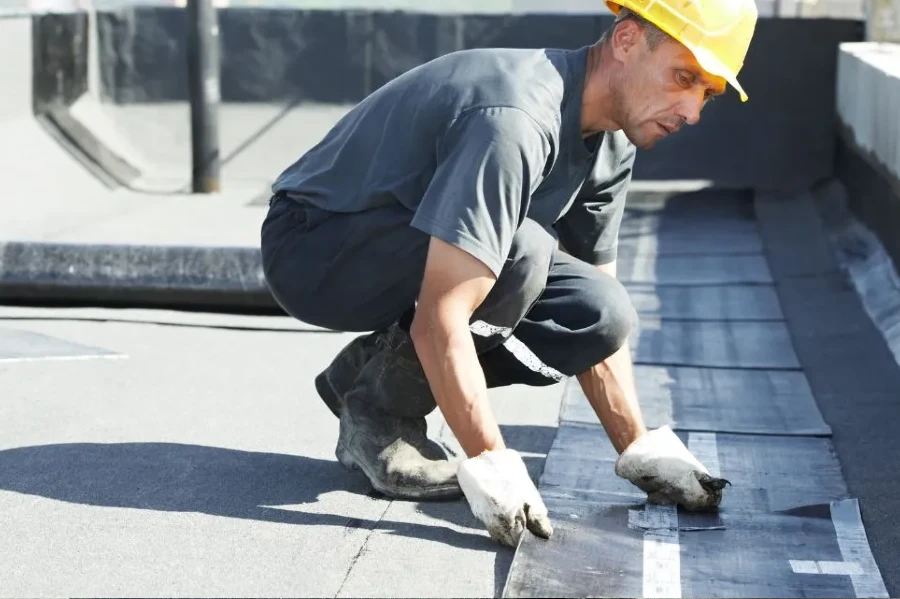
What is Modified Bitumen Roofing?
Modified bitumen roofing is a type of asphalt-based roofing material that has been modified with polymerized rubbers or plasticized polymers to enhance its strength and flexibility. Often referred to as “mod bit,” this roofing system combines the proven reliability of traditional asphalt roofing with the advanced properties of synthetic materials. Modified bitumen roofing systems are especially suitable for low-slope and flat roofs, where water drainage may be challenging.
Key Features of Modified Bitumen Roofing Systems
Modified bitumen roofing stands out due to its multi-layered construction and high durability, providing the following key features and benefits: Unlike traditional built up roofing systems, which use multiple layers of asphalt and felts, modified bitumen roofing systems offer enhanced efficiency and reduced maintenance requirements.
- Waterproofing Protection: Modified bitumen roofing systems offer excellent waterproofing, thanks to their multiple layers and bitumen patches that create a watertight barrier. This characteristic makes them highly effective at preventing leaks and water damage.
- Energy Efficiency: Modified bitumen membranes are designed to reduce energy costs by reflecting UV rays and preventing excess heat absorption. This energy-efficient quality contributes to a comfortable indoor environment and helps reduce energy expenses.
- UV Resistance: Modified bitumen roofs have UV-resistant properties, which means they can withstand the damaging effects of the sun. This UV protection extends the service life of the roof by preventing deterioration and cracking.
- Weather and Impact Resistance: Modified bitumen roofing materials, especially those with SBS (styrene butadiene styrene) or APP (atactic polypropylene) modifiers, are exceptionally weather-resistant. They withstand extreme temperatures, high winds, and even wind-driven debris, making them ideal for areas prone to severe weather.
- High Durability: Known as one of the most durable roofing materials, modified bitumen roofs are built to handle foot traffic and withstand storm damage. Their thick membrane layers provide strong resistance to punctures and tears, ensuring the roof’s longevity.
Types of Modified Bitumen Roofing Systems
Modified bitumen roofing systems are classified based on the types of polymers used to enhance their properties:
- SBS Modified Bitumen: SBS, or styrene butadiene styrene, modified bitumen roofing is a rubber-like membrane that provides excellent flexibility and elongation. SBS-modified membranes are particularly beneficial for climates with significant temperature fluctuations, as they can expand and contract without cracking. This system can be installed using cold adhesives, mechanical attachment, or heat welding.
- APP Modified Bitumen: APP, or atactic polypropylene, modified bitumen roofing is a plastic asphalt membrane that offers enhanced UV resistance and weather protection. APP-modified bitumen is commonly torch-applied, where heat is used to melt the material and adhere it to the roof surface. This system is ideal for low-slope and flat roofs exposed to high sun exposure.
Installation Methods for Modified Bitumen Roofing Systems
The process to install modified bitumen roofing systems can vary, and choosing the proper installation method depends on factors such as building design, climate, and budget. Here are the main methods used for modified bitumen installation:
- Torch Application: Torch-applied modified bitumen roofing is a method where the membrane is heated with a torch, which melts the material and allows it to adhere to the roof surface. Torch application is common for APP-modified membranes and provides a seamless, watertight bond.
- Cold Adhesives: Cold adhesives are used to install SBS-modified bitumen membranes without the need for heat. Cold-applied adhesives provide a safe and odor-free alternative to torching, making this method suitable for buildings where hot application is not practical.
- Mechanical Attachment: Some modified bitumen membranes are mechanically attached to the roof deck using screws and plates. This installation method is often used for SBS-modified bitumen and offers a fast, cost-effective option.
- Self-Adhered: Self-adhering modified bitumen membranes have a peel-and-stick application process, where the membrane adheres to the surface without the need for additional adhesives. This method is straightforward and provides a clean, odorless installation option.
Layers of a Modified Bitumen Roof
A modified bitumen roofing system typically consists of multiple layers to provide maximum durability and waterproofing. The primary layers in a mod bit roofing system include:
- Base Layer: The base layer serves as the foundation of the roofing system, often made from asphalt or a similar material that adheres to the roof deck. The base layer provides additional protection and stability.
- Modified Bitumen Membranes: Modified bitumen membranes are installed on top of the base layer, forming a waterproof barrier. These membranes can include SBS or APP modifiers, depending on the specific needs of the building.
- Cap Layer: The cap layer is the final protective layer, providing added resistance to UV rays, foot traffic, and weather elements. Some cap layers are coated with mineral granules to improve the roof’s durability and reflectivity.
- Optional Vapor Barriers: In some applications, a vapor barrier is included to prevent moisture buildup within the roof system, further enhancing the roof’s waterproofing capabilities.
Benefits of Modified Bitumen Roofing for Commercial Buildings
Modified bitumen roofing systems offer numerous advantages for commercial buildings:
- Longevity and Durability: Modified bitumen roofs have an impressive lifespan, with an average life expectancy of over a century in some cases. With proper installation and maintenance, these roofs can provide dependable protection for decades.
- Minimal Maintenance Requirements: Modified bitumen roofing systems are known for their low maintenance requirements. Regular inspections and minimal repairs can help prolong the life of the roof and prevent costly repairs.
- Cost-Effectiveness: Modified bitumen roofing systems are a cost-effective alternative to some other commercial roofing materials. Their durability and resistance to damage minimize repair costs and provide long-term value.
- Environmental Benefits: Modified bitumen’s energy efficiency contributes to a reduced environmental impact. The material reflects heat, reducing the need for excessive cooling and lowering energy consumption.
Common Applications for Modified Bitumen Roofing
Modified bitumen roofing systems are ideal for a range of commercial buildings with flat or low-slope roofs. Typical applications include:
- Office Buildings: Modified bitumen roofing is perfect for office buildings, providing reliable protection with minimal maintenance.
- Industrial and Warehouse Facilities: These roofs can handle the heavy foot traffic often seen in industrial environments and withstand the weight of rooftop equipment.
- Retail Spaces and Shopping Centers: Modified bitumen’s weather resistance and energy efficiency make it a practical choice for retail buildings, where climate control is important.
Modified Bitumen Roofing System vs. Other Options
When considering roofing systems for commercial and industrial buildings, it’s essential to compare the available options to make an informed decision. Modified bitumen roofing systems stand out for their durability, flexibility, and cost-effectiveness, but how do they stack up against other popular choices?
- EPDM (Rubber) Roofing: EPDM roofing is a single-ply membrane made from synthetic rubber, known for its durability and UV resistance. While EPDM is a reliable option for flat roofs, it tends to be more expensive than modified bitumen and may not be ideal for high-traffic areas due to its susceptibility to punctures.
- TPO (Thermoplastic Polyolefin) Roofing: TPO roofing is another single-ply membrane, combining polypropylene and ethylene-propylene rubber. It offers excellent durability, flexibility, and UV resistance. However, TPO roofing can be pricier than modified bitumen and may not withstand heavy foot traffic as well.
- PVC (Polyvinyl Chloride) Roofing: PVC roofing is a single-ply membrane made from polyvinyl chloride, offering superior durability, flexibility, and UV resistance. Despite its benefits, PVC roofing is generally more expensive than modified bitumen and may not be the best choice for areas with frequent foot traffic.
- Built-Up Roofing (BUR) Systems: BUR systems consist of multiple layers of asphalt and felts, providing robust durability and UV resistance. While BUR systems are a solid choice for commercial buildings, they are typically more costly than modified bitumen and may not be as suitable for high-traffic areas.
In summary, while each roofing system has its advantages, modified bitumen roofing systems offer a balanced combination of durability, flexibility, and cost-effectiveness, making them an excellent choice for many commercial and industrial applications.
Modified Bitumen Roofing System Costs
Understanding the costs associated with a modified bitumen roofing system is crucial for budgeting and planning. The total cost can vary based on several factors, including the size of the roof, the type of membrane used, and the installation method. Here’s a detailed breakdown:
- Material Costs: The cost of modified bitumen roofing materials typically ranges from $3 to $6 per square foot. This variation depends on the type of membrane chosen, such as SBS or APP, and any additional features like UV resistance or enhanced durability.
- Labor Costs: Labor costs for installing a modified bitumen roofing system can range from $2 to $4 per square foot. Factors influencing labor costs include the complexity of the installation, the building’s location, and the specific installation method used (e.g., torch application, cold adhesives, mechanical attachment, or self-adhered).
- Total Cost: When combining material and labor costs, the total cost of a modified bitumen roofing system generally falls between $5 and $10 per square foot. This range provides a realistic expectation for budgeting purposes, allowing building owners to plan accordingly.
By understanding these cost components, building owners can make informed decisions and ensure they select a roofing system that fits their budget while meeting their performance needs.
Signs of Roof Aging and Maintenance Tips
Even though modified bitumen roofs are highly durable, it’s essential to monitor for early warning signs of aging and wear. Building owners should watch for signs such as:
- Visible Cracks or Tears: Cracks or tears can indicate that the roof membrane is wearing down and may need patching or repair.
- Ponding Water: Standing water can lead to damage over time. Inspecting and addressing drainage issues can prevent long-term damage.
- Blistering or Bubbling: Blisters can form if moisture becomes trapped within the membrane layers, indicating potential issues with waterproofing.
- Granule Loss: Excessive granule loss from the cap layer may reduce the roof’s UV protection, and a professional inspection can determine if repairs are needed.
Modified Bitumen Roofing System Warranties and Guarantees
Investing in a modified bitumen roofing system comes with the added assurance of warranties and guarantees from manufacturers and contractors. These warranties provide peace of mind and protect your investment. Here are some common types of warranties and guarantees available:
- Manufacturer’s Warranty: Most manufacturers offer a warranty on their modified bitumen roofing products, typically ranging from 10 to 20 years. This warranty covers defects in the materials, ensuring that the roofing system performs as expected.
- Contractor’s Guarantee: Contractors often provide a guarantee on their workmanship, which can range from 1 to 5 years. This guarantee ensures that the installation is performed correctly and any issues arising from poor workmanship are addressed.
- System Warranty: Some manufacturers offer a comprehensive system warranty that covers the entire roofing system, including the membrane, insulation, and flashing. This type of warranty provides extensive protection and peace of mind.
- Maintenance Warranty: In some cases, manufacturers offer a maintenance warranty that covers the cost of maintenance and repairs for a specified period. This warranty ensures that the roofing system remains in optimal condition and any necessary repairs are handled promptly.
Before selecting a modified bitumen roofing system, it’s essential to review the warranties and guarantees offered by manufacturers and contractors. Understanding the coverage and terms of these warranties will help you make an informed decision and ensure long-term protection for your roofing investment.
The Value of Hiring an Experienced Commercial Roofing Contractor
Proper installation is crucial to ensure the long service life of modified bitumen roofing. Building owners should work with an experienced commercial roofing contractor who understands modified bitumen roofing systems and their unique requirements. A qualified contractor will ensure proper installation, recommend the best materials for specific building needs, and offer maintenance tips to maximize the roof’s performance.
Why Choose Modified Bitumen for Your Next Roofing Project?
Modified bitumen roofing is an excellent option for commercial buildings seeking a reliable, energy-efficient, and cost-effective roofing solution. Its unique properties, including durability, weather resistance, and UV protection, make it ideal for flat and low-slope roofs. If you’re considering modified bitumen roofing for your commercial property, contact Robbins Roofing today to learn more and explore the best options for your roofing project.
Corrugated Metal Roofing
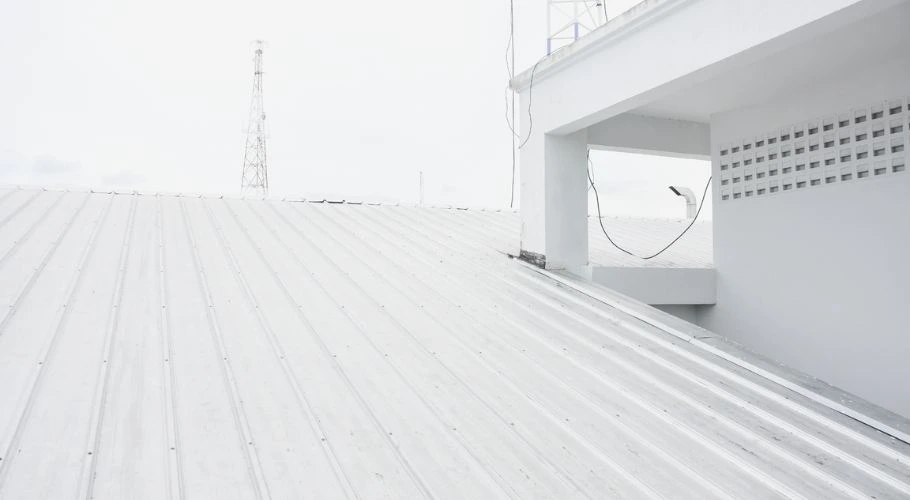
What is Corrugated Metal Roofing?
Corrugated metal roofing consists of wavy, ribbed panels made from steel or other metals. These panels can also double as wall cladding, showcasing their versatility and aesthetic appeal in industrial, retail, or office applications. Lightweight yet incredibly strong, corrugated metal panels are ideal for commercial buildings, including warehouses, factories, retail outlets, and office spaces.
Whether you’re replacing an old roofing system or constructing a new facility, corrugated metal roofing offers benefits that are hard to beat.
Key Benefits of Corrugated Metal Roofing for Commercial Buildings
Exceptional Durability
Corrugated metal roofs are built to endure. Resistant to extreme weather elements like rain, snow, and wind, they offer impressive longevity. Unlike other materials, such as traditional asphalt roofing, metal panels don’t crack, warp, or deteriorate over time, making them a reliable choice for high-traffic commercial settings. In fact, a corrugated metal roof can last 2-3 times longer than an asphalt shingle roof, providing a cost-effective and durable solution.
Lightweight and Easy to Install
Roof panels, including corrugated options, are much lighter than many traditional roofing materials, reducing the structural load on commercial buildings. This makes installation more straightforward and less labor-intensive, resulting in faster project completion times and potentially lower labor costs.
Cost-Effective Solution
Corrugated metal roofing provides excellent value for its cost. It often comes at a more affordable price point than premium options while still delivering superior durability and performance.
Eco-Friendly Choice
Sustainability is a priority for many businesses today, and corrugated metal roofing fits the bill. These roofs are recyclable, which aligns with eco-conscious corporate practices and green building certifications.
Wide Variety of Styles
Corrugated metal roofing comes in numerous colors, finishes, and textures, allowing you to tailor the look to your commercial property’s branding or architectural style. From industrial-modern designs to rustic appearances, the options are virtually limitless. Additionally, corrugated metal can be used as wall panels, offering both aesthetic appeal and functionality in various building types.
Types of Corrugated Metal Roofing
Exposed Fastener Panels
Featuring visible fasteners, these panels are straightforward to install and offer a classic, cost-effective solution. Their simplicity makes them a popular choice for warehouses and manufacturing facilities.
Standing Seam Panels
With concealed fasteners, standing seam panels provide a sleek, modern aesthetic and exceptional durability. These are perfect for commercial buildings in areas prone to harsh weather.
Corrugated Steel Panels
Renowned for strength and corrosion resistance, corrugated steel panels are well-suited for both industrial and commercial applications. Their long-lasting performance ensures minimal maintenance costs over time.
Galvanized Corrugated Metal Roofing
Crafted from galvanized steel, these panels are coated with a layer of zinc to enhance corrosion resistance. They are ideal for environments with high moisture or humidity levels, such as coastal regions or industrial plants.
Galvalume Corrugated Metal Roofing
Combining the benefits of galvanized steel and aluminum, galvalume panels offer unparalleled durability and resistance to corrosion. They are a great option for commercial buildings exposed to extreme weather conditions or saltwater environments.
How to Choose the Right Corrugated Metal Roof for Your Commercial Building
When selecting corrugated metal roofing for your commercial property, consider the following factors:
- Roof Slope: Ensure your building’s roof slope meets the minimum requirements for water drainage.
- Underlayment: Use high-quality synthetic underlayment for added protection against water infiltration.
- Fastener and Trim Options: Select fasteners and trim materials that enhance both durability and aesthetics while ensuring a weatherproof installation.
Consult with a commercial roofing expert to match your materials to your building’s specific needs and environmental conditions.
Design and Installation Considerations
When designing and installing a corrugated metal roof, several factors are crucial for a successful and long-lasting installation.
- Minimum Roof Slope: Ensuring a minimum roof slope of 3/12 is essential for proper water runoff. This slope prevents water from accumulating on the roof, which can lead to leaks and structural damage.
- Panel Orientation: Corrugated metal panels offer flexibility in installation. They can be oriented horizontally or vertically, depending on the desired aesthetic and structural requirements. Horizontal installation can provide a more traditional look, while vertical installation often offers a modern, streamlined appearance.
- Fastening Systems: The choice between exposed and concealed fasteners can impact both the look and performance of your metal roof. Exposed fasteners are straightforward and cost-effective, while concealed fastening systems provide a cleaner, more polished appearance.
- Synthetic Underlayment: Using a high-quality synthetic underlayment is recommended to add an extra layer of protection against water penetration. This underlayment ensures a smooth installation process and enhances the overall durability of the roof.
- Trim and Flashing: Proper trim and flashing are critical to prevent water intrusion. These components ensure a watertight seal around roof penetrations such as vents, chimneys, and skylights, safeguarding the building from leaks and water damage.
Colors and Finishes
Corrugated metal roofing offers a broad spectrum of color and finish options to meet commercial branding and architectural requirements:
- Standard Colors: These include versatile shades like gray, black, and white, perfect for industrial and office buildings.
- Premium Colors: Metallic hues like silver and bronze add a touch of sophistication to corporate facilities.
- Matte Finishes: A modern, non-reflective look, ideal for minimalist and contemporary designs.
- Glossy Finishes: Vibrant and reflective, glossy finishes can help your property stand out in a busy commercial area.
- Specialty Finishes: Options like textured or embossed finishes can give your building a unique and distinguished appearance.
Corrugated Metal Roofing Installation
Proper installation is critical for the longevity and performance of a corrugated metal roof. A professional roofing team will measure, cut, and align panels precisely while securing them with appropriate fasteners. Special attention to details like overlaps, valleys, and eaves ensures a watertight seal. Ensuring proper access to all parts of the roof during installation is essential to avoid future maintenance issues.
While some brands offer DIY installation kits, commercial roofing projects benefit significantly from expert installation to ensure quality and compliance with local building codes.
Maintenance and Repair
Corrugated metal roofing is low-maintenance, but regular upkeep is essential for optimal performance:
- Regular Inspections: Check for loose fasteners, rust, or lifting panels, especially after extreme weather events.
- Cleaning: Remove debris to prevent water pooling. A soft brush or low-pressure washer can be used to clean the surface.
- Rust Prevention: Apply rust-inhibiting coatings in areas with high humidity or exposure to pollutants.
- Repairs: Replace damaged or corroded panels promptly to prevent leaks and structural damage.
Cost and Budgeting
Corrugated metal roofs are known for their cost-effectiveness, but it’s important to consider the total cost of ownership and budget accordingly.
- Material Costs: The price of corrugated metal panels can vary widely, typically ranging from $3 to $15 per square foot. Factors influencing cost include the type of metal, gauge, and finish.
- Installation Costs: Labor costs for installing a corrugated metal roof can range from $3 to $10 per square foot. These costs depend on the complexity of the installation and the geographic location of the project.
- Maintenance Costs: One of the advantages of corrugated metal roofs is their minimal maintenance requirements. However, occasional cleaning and inspections are necessary to ensure the roof remains in optimal condition.
- Warranty and Durability: Corrugated metal roofs are a long-term investment, often lasting 30 to 50 years or more. This longevity, combined with minimal maintenance needs, can result in significant cost savings over time and provide peace of mind.
Code Compliance and Regulations
Ensuring that your corrugated metal roof complies with local building codes and regulations is essential for safety and legality.
- Building Codes: Corrugated metal roofs must adhere to local building codes, such as the International Building Code (IBC) and the International Residential Code (IRC). These codes ensure that the roof meets safety and performance standards.
- Wind Resistance: In areas prone to high winds, corrugated metal roofs must be designed and installed to resist wind loads. Proper installation techniques and materials can prevent wind damage and ensure the roof’s longevity.
- Fire Resistance: Corrugated metal roofs can be designed to meet fire-resistance requirements specified in the IBC and IRC. This feature is particularly important for commercial buildings, where fire safety is a top priority.
- Environmental Considerations: Corrugated metal roofs can contribute to energy efficiency and sustainability goals. They can be designed to reflect heat, reducing cooling costs, and are often made from recyclable materials, aligning with green building practices.
By considering these design, cost, and regulatory factors, you can ensure that your corrugated metal roof not only meets your aesthetic and functional needs but also complies with all necessary standards and provides long-term value.
Comparison to Other Commercial Roofing Materials
Durability
Corrugated metal roofing surpasses materials like asphalt shingles and single-ply membranes in durability, lasting 2-3 times longer than an asphalt shingle roof, often exceeding 30 years.
Energy Efficiency
Metal roofs reflect heat, reducing cooling costs—an important factor for commercial spaces requiring temperature regulation.
Low Maintenance
Unlike flat roofing systems that may require frequent repairs, corrugated metal roofing requires minimal attention.
Fire Resistance
Non-combustible and resistant to sparks, corrugated metal roofing is a safer choice for commercial properties.
Environmental Impact
Made from recyclable materials, corrugated metal roofing aligns with green building practices and sustainability goals.
Get Started Today!
Transform your commercial building with a durable, stylish, and eco-friendly corrugated metal roof. Contact us for a free consultation and quote tailored to your project’s requirements. Whether you need expert advice on material selection, design options, or cost estimates, we’re here to help.
Don’t wait—secure your property with a reliable and visually appealing roofing solution today!
PVC Roofing
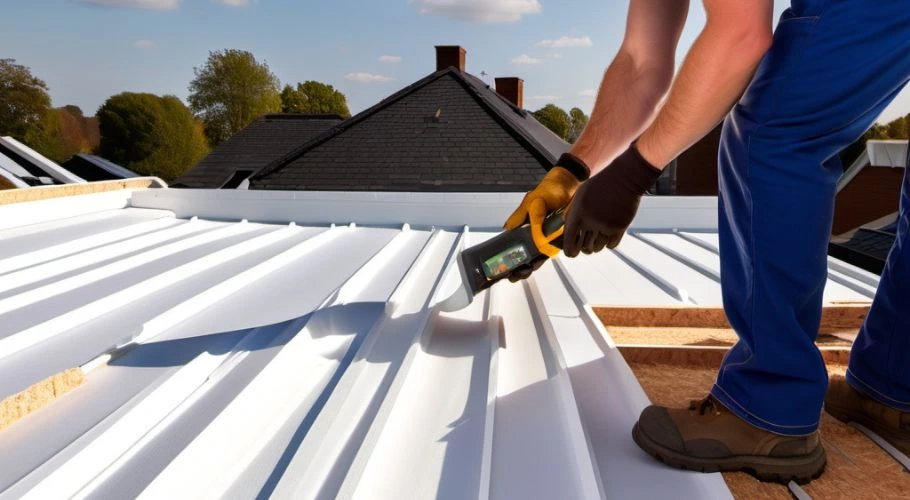
What is PVC Roofing?
PVC roofing is a roofing membrane crafted from polyvinyl chloride, a durable plastic material known as a PVC membrane. These single-ply membranes are designed to handle weather conditions, chemical exposure, and physical damage, offering a seamless and energy-efficient solution.
Its proven performance makes it a suitable choice for institutional buildings and commercial roofing systems. Commonly, PVC roofing membranes are mechanically attached or adhered to the roof deck and heat-welded at the seams, creating a watertight barrier.
Benefits of PVC Roofing Systems
PVC roofs offer a host of advantages that make them a standout roofing system for various applications. Proper installation by a skilled roofing contractor is crucial for ensuring the roof’s durability and resistance to severe weather conditions, as well as for preventing unnecessary damage over time.
1. Exceptional Chemical Resistance
PVC roofing membranes resist exposure to harsh chemicals, oils, and greases. This quality makes them ideal for commercial buildings in industrial areas or facilities where such substances are present.
2. Energy Efficiency
Energy Star-rated PVC membranes reflect the sun’s rays, reducing heat absorption and lowering cooling costs. This property enhances the building’s energy efficiency while ensuring a comfortable indoor environment.
3. Durability in Harsh Weather
With high resistance to UV rays, high winds, and falling debris, PVC roofing systems maintain structural integrity under challenging conditions. Additionally, fire resistance offers an extra layer of safety.
4. Heat-Welded Seams for Leak Protection
The heat-welded seams in PVC roofing systems provide superior durability compared to adhesives, ensuring long-lasting leak protection even during extreme weather.
5. Flexibility and Strength
PVC membranes are highly adaptable to complex roof designs and resist physical damage, making them ideal for low-slope roofs that undergo frequent maintenance.
Types of PVC Roofing Membranes
Different types of PVC roofing membranes cater to unique commercial needs:
- Standard PVC Membranes: Versatile and durable, ideal for a wide range of roofing projects.
- PVC KEE Membranes: Enhanced with Ketone Ethylene Ester (KEE), offering extra flexibility and chemical resistance.
- Fleece-Backed PVC: Equipped with a fleece backing for added strength, perfect for areas with heavy foot traffic or rough environmental conditions.
Common Applications and Solutions
PVC roofing systems are widely used across various industries due to their exceptional durability, flexibility, and resistance to chemicals and weathering. These attributes make PVC roofs an ideal choice for a range of applications:
- Commercial and Industrial Buildings: PVC roofs are perfect for low-slope and flat roofs, providing a waterproof and durable solution. They are particularly beneficial for buildings with high foot traffic and exposure to harsh chemicals, ensuring long-lasting performance and minimal maintenance.
- Institutional Buildings: Schools, hospitals, and government buildings often require a reliable and low-maintenance roofing system. PVC roofing systems meet these needs by offering robust protection against the elements and reducing the need for frequent repairs.
- Residential Buildings: In areas prone to high winds, heavy rainfall, and extreme temperatures, PVC roofs provide homeowners with a resilient and energy-efficient roofing solution. Their ability to withstand severe weather conditions makes them a popular choice for residential applications.
- Roofing Restoration: PVC roofing systems are also an excellent option for restoring existing roofs. They offer a cost-effective and efficient solution, extending the life of the roof while enhancing its performance and energy efficiency.
In terms of solutions, PVC roofing systems deliver numerous benefits, including:
- Energy Efficiency: By reflecting solar rays and reducing heat gain, PVC roofs help lower energy consumption, contributing to a more sustainable building.
- Durability: Resistant to weathering, chemicals, and punctures, PVC roofs provide a long-lasting solution that can withstand the rigors of various environments.
- Low Maintenance: Easy to install, repair, and maintain, PVC roofs reduce the need for frequent repairs and replacements, saving building owners time and money.
- Cost-Effectiveness: Offering a durable and long-lasting roofing system at a competitive price, PVC roofs are a cost-effective choice for building owners looking to maximize their investment.
PVC Roofing vs. TPO Roofing
Both TPO and PVC roofing are popular single-ply membranes, but they differ in key ways:
TPO and PVC membranes are known for their reflective properties and energy efficiency. They offer advantages in installation, material characteristics, and specific applications, such as durability against harsh conditions and fire resistance.
1. Material Composition
- PVC membranes are made from polyvinyl chloride, excelling in chemical resistance.
- TPO membranes, made from thermoplastic polyolefin, are flexible but lack the long-standing proven performance of PVC roofs.
2. Durability and Weather Resistance
PVC roofs outperform TPO roofs in extreme weather, thanks to heat-welded seams and robust material.
3. Chemical Resistance
For buildings exposed to harsh chemicals, PVC roofing systems are the better option, while TPO membranes work well for environments with minimal chemical exposure.
4. Cost and Investment
Although the initial investment in a PVC roofing system may be higher, its longevity and low maintenance make it a cost-effective choice over time.
Installation Methods
The installation of PVC roofing membranes varies based on the project’s needs:
- Mechanically Fastened: Mechanically attached membranes are secured using screws and plates, ensuring stability in areas with high winds.
- Fully Adhered: Adhesives bond the membrane to the roof deck, providing a sleek appearance and strong adhesion.
- Fleece-Backed Systems: The fleece backing adds puncture resistance, making these systems ideal for high-traffic areas.
PVC Roofing for Sustainability
Beyond performance, PVC roofs are also eco-friendly. They often incorporate recycled materials and can be recycled at the end of their service life, reducing environmental impact. Additionally, their energy efficiency supports lower energy consumption, aligning with green building practices.
Maintaining PVC Roofs
Regular maintenance can extend the lifespan of a PVC roofing system. Watch for signs of aging, such as:
- Cracking or Shrinking Membranes: Caused by prolonged UV exposure.
- Weakened Seams: Inspect heat-welded seams regularly to ensure watertight performance.
Why Choose PVC Roofing for Your Commercial Building?
PVC roofing systems are a popular and reliable choice for building owners due to their durability, flexibility, and resistance to chemicals and weathering. With a wide range of applications, from commercial and industrial buildings to institutional and residential structures, PVC roofing systems offer a cost-effective and efficient solution for various roofing needs. Whether you’re installing a new roof or restoring an existing one, PVC roofing systems provide a safe, durable, and energy-efficient building envelope. By understanding the benefits and applications of PVC roofing systems, building owners can make informed decisions and ensure their buildings are well-protected and sustainable for years to come.
Explore More
For more information, tips, and resources on roofing and home improvement, explore our other information hubs:
Our Reviews
Trustindex verifies that the original source of the review is Google. Fantastic company, worked with me every step of the way. Professional, knowledgeable, and friendly. Larry and Colby were a pleasure to work with.Posted onTrustindex verifies that the original source of the review is Google. Larry is fantastic with the claims adjusters. He got me more money from the insurance company than I thought possible. Also his concern for getting everything done perfectly was a great benefit.Posted onTrustindex verifies that the original source of the review is Google. I am posting this in March 2022. After a huge hailstorm in April 2020, our insurance company decided they did not want to pay for a new roof on our house, in spite of lots of roof damage and most of our neighbors getting new roofs after that storm. Robbins Roofing was the third roofing company to work with us, the only one that was willing to stick it out while we waited (and are still waiting) for the insurance company to pay the full replacement cost. We have had to go through a public adjuster and then an attorney. During that time, Robbins Roofing replaced individual shingles as wind and more hail damaged them. Larry Robbins checked in with us on a regular basis to see how our claim was going. He provided all the information the public adjuster and attorney have needed throughout their process. Finally after nearly 2 years, we decided that we could not wait any longer to replace our roof, so we contacted Larry Robbins to get it set up. Within two weeks, we had a new roof. The workers were professional, polite, and kept things clean. They put tarps down around the house as they pulled off the old roof. On the first day, I forgot to pull my vehicle out of the garage ahead of time to go to work. They stopped the work on that side of the house for a few minutes, pulled the tarps away, checked for nails, and then cleared the way for me to get out of the driveway. The new roof looks fantastic! We could not be happier! We hope we do not need to get a new roof again any time soon, but if we do, we will go with Robbins Roofing. Very highly recommended.Posted onTrustindex verifies that the original source of the review is Google. Absolutely top notch company. Larry personally came out to talk to me and help me through the claim process. He and his team them made the needed repairs quickly and at a great price. I couldn’t be happier. Thank you!!Posted onTrustindex verifies that the original source of the review is Google. After my father’s roof sustained damage from the OKC ice storm in late 2020 he called Larry Robbins on the recommendation of the retired roofer who had done all his roof repairs for 27 years. Larry came out promptly and inspected the roof, and recommended full replacement of this very odd and unique roof that had never been replaced since it’s installation in 1978. The shingles were concrete tiles that were no longer available, and between the many cracked tiles and roof deck damage, replacement was inevitable. Unfortunately my father passed away before the arrangements were made, and a few months later my family was in the house when a week of heavy rains hit and leaks appeared in about a dozen places in the house. I called Robbins on a Sunday and left a message, they called back Monday morning, and Larry came to the house a couple of days later to see what he could do and we agreed to go ahead with the roof replacement. A couple of hours later Tanner came out to put tarps over the leaking spots and within days we had a contract and a start date. It was a very big job because of the size of the roof and the weight of the tiles that were being removed, but Larry put two crews on the job and found as many dumpsters as possible, and the job that was projected to take a week took only 3 days. Tanner and his crew were great, they cleaned up beautifully, and we now have a secure roof, ten new leakproof skylights, and new gutters as of last Friday. We really appreciated Larry’s kindness about my father’s passing and his concern that things be done right as quickly as possible. We have had a very good experience with Larry and the Robbins Roofing team from start to finish.Posted onTrustindex verifies that the original source of the review is Google. I would just like to commend Robbins roofing for an awesome job they did on our roof replacing it after a hail storm in February of this year in Norman Oklahoma. I had five or six other companies come out. Some of the companies were from out of state or from very far distances. We gave them a call they showed up on time they gave us a complete analysis of the damage that was done and they even worked with our insurance company and took care of all the paperwork and everything with that and coordinated all of that. It is a lot to deal with when you are a homeowner. Thankfully Eric P came out gave us an estimate did everything he said he was going to do he was very honest and coordinated everything scheduled a time when they could do it with his crew they did it all in one day and we were very pleased and happy with the job that they did we would highly recommend them to anyone we would like to thank him and his crew of people for a wonderful job well done. Russel and Lana S.Posted onTrustindex verifies that the original source of the review is Google. The Team from Robbins Roofing met all my expectations...from the initial roof inspection thru the collaboration with my insurer. I had a high level of confidence in Larry's ability to manage the entire process. Once his team (2 full crews to start) arrived at my home the work never slowed down! The project manager, Tanner, was on-site and in control but more importantly to me, he kept me in the loop throughout the project and answered every question I had about the materials and methods being used. I found the entire experience with Robbins' team members to be low stress and professional and I highly recommend them now to my friends, neighbors and clients! Thank You Larry Robbins and Team!Posted on
Let Robbins Roofing Handle Your Commercial Roofing Needs
With so many options in the commercial roofing industry, it’s helpful to have the guidance of knowledgeable roofing professionals. Interested in finding out more about single ply roofing systems for your business? Click here to learn more about Robbins Roofing’s commercial roofing services and find the perfect roofing solution for your building!

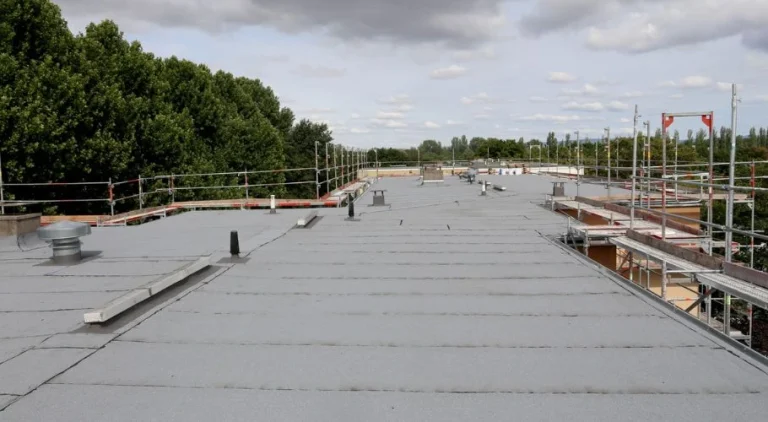
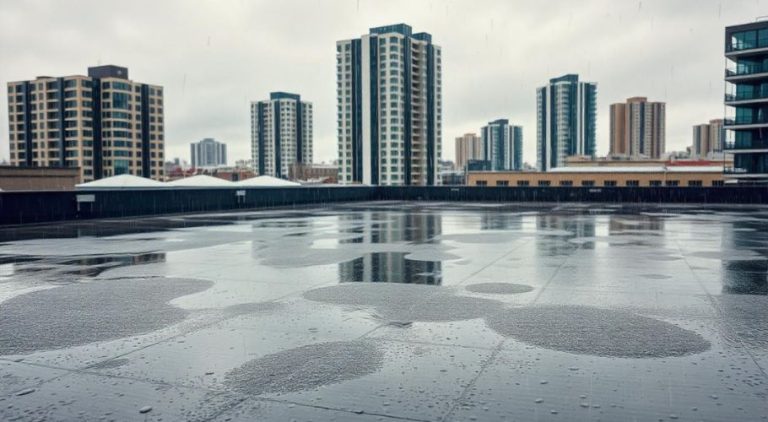
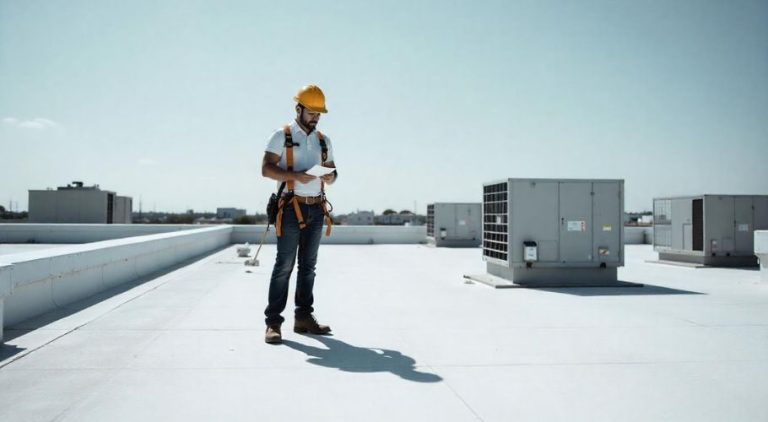
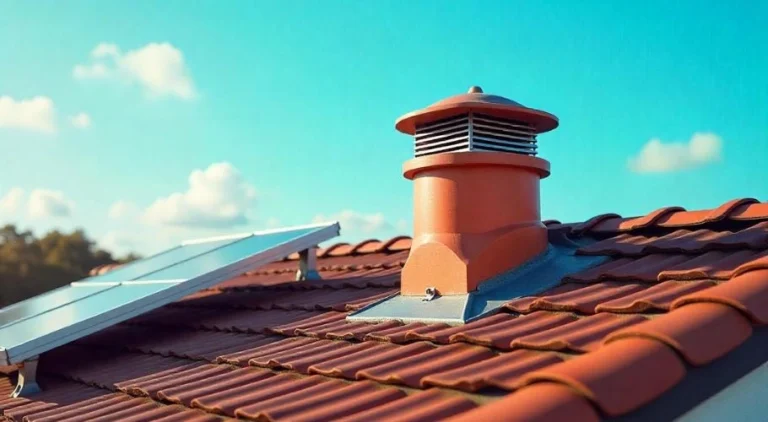
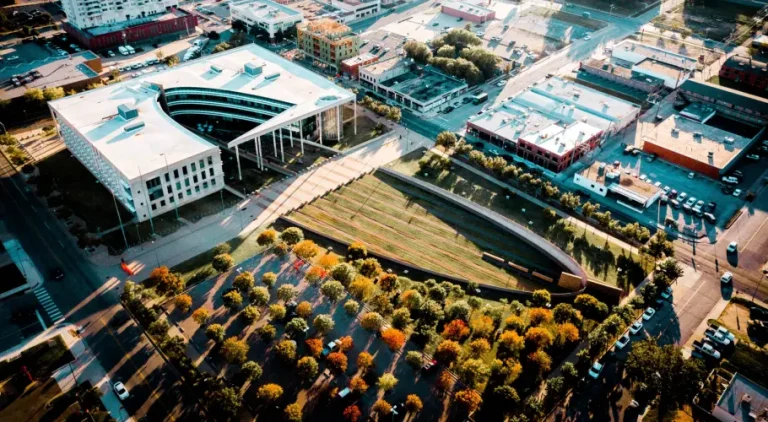
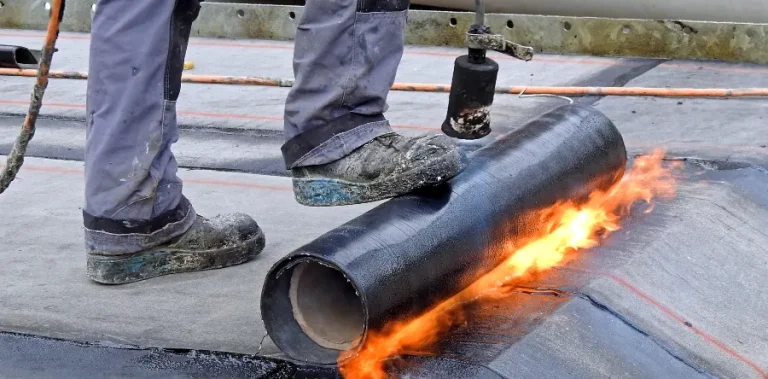

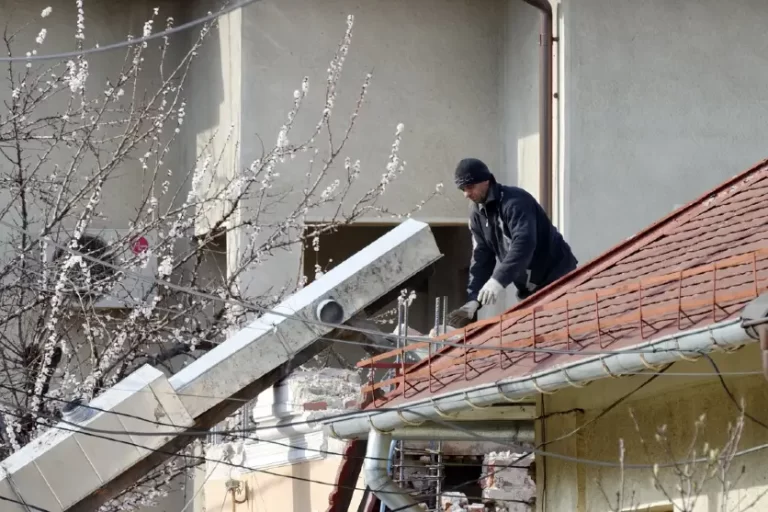
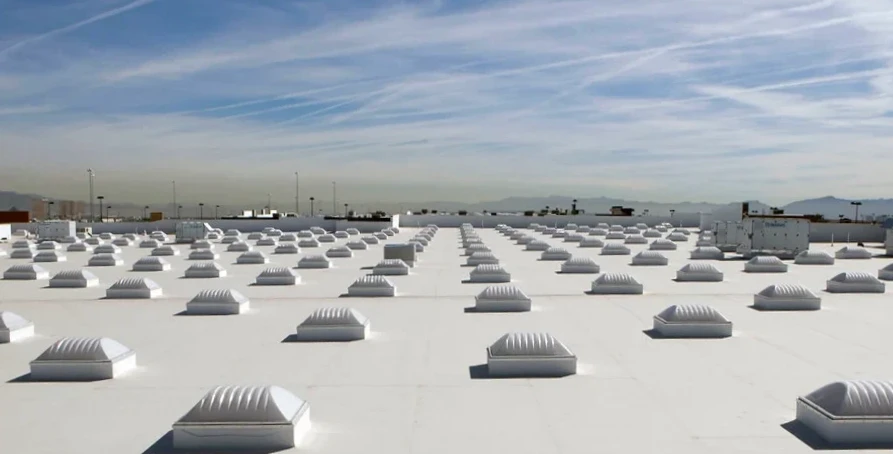 Key Benefits of TPO Roofing:
Key Benefits of TPO Roofing: 